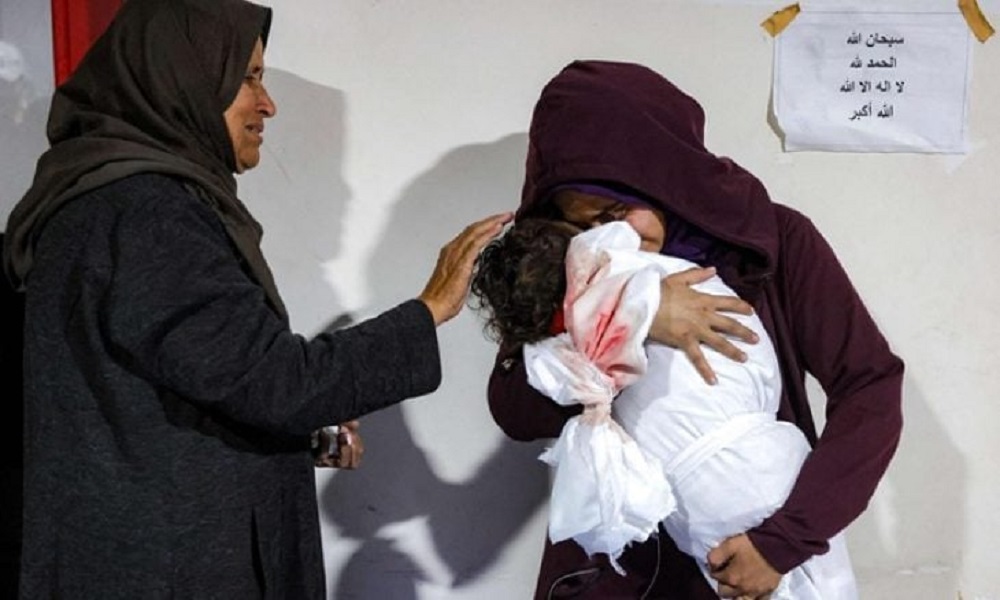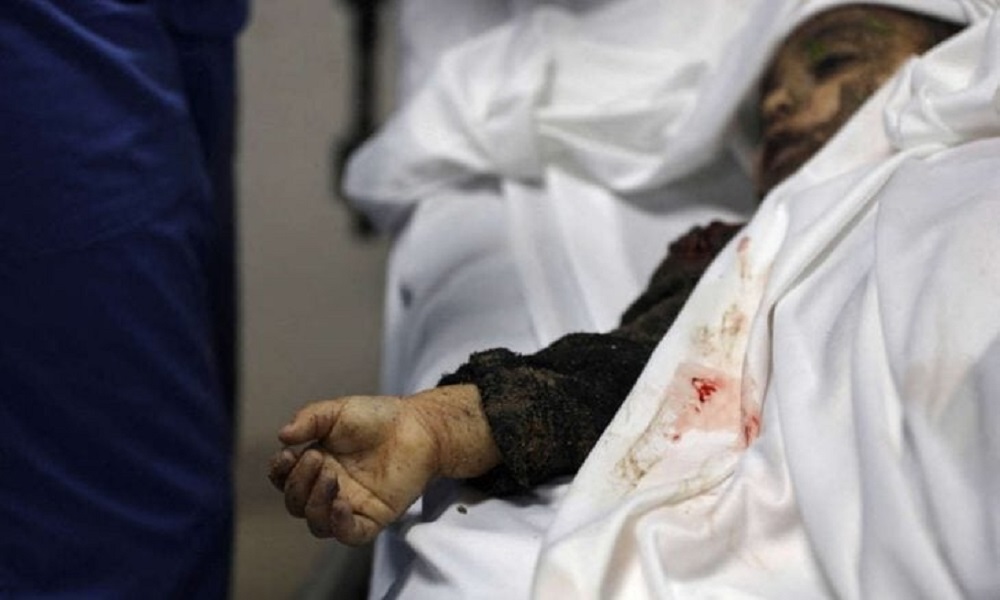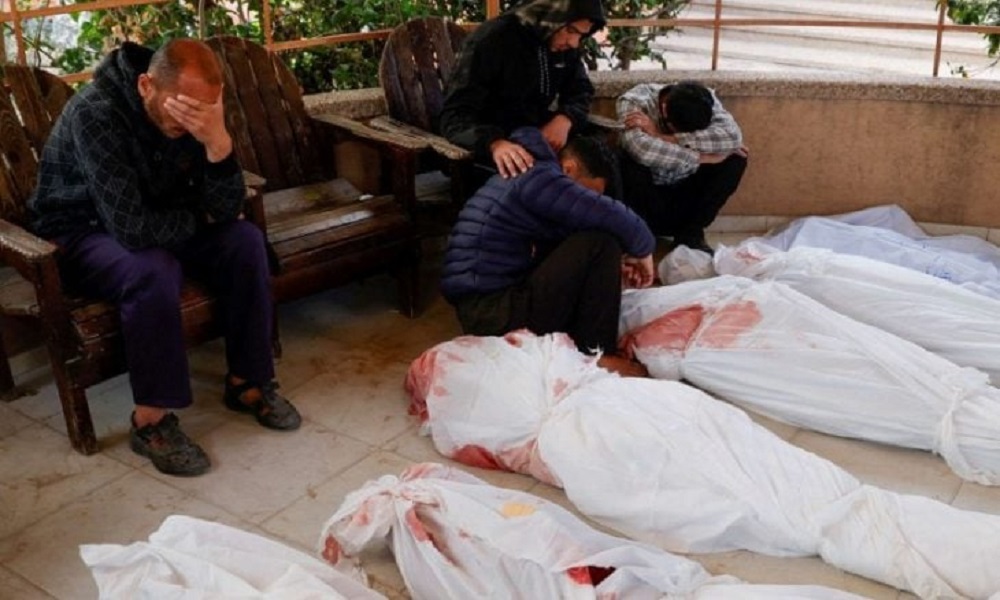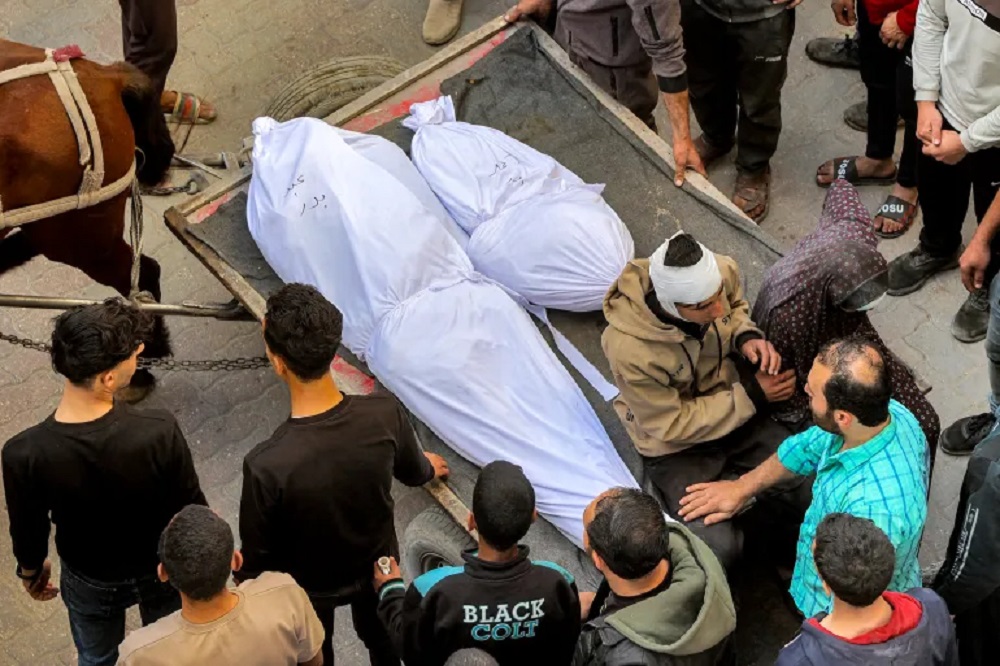Haaretz Reveals Gaza Bloodbath: Painful Cries and the Stench of Death Everywhere
An in-depth investigation by Haaretz reveals the human toll of Israel’s March 17 assault on Gaza, contradicting official claims and uncovering horrific scenes of death and devastation.

Watan-On March 17, Israel renewed its assault on the Gaza Strip, violating the ceasefire agreement. According to the Israeli narrative, the airstrikes took Hamas by surprise and killed hundreds of its members. But the truth is that the primary victims were civilians—a fact confirmed by an investigation published in an Israeli newspaper.
In its weekend supplement, Haaretz released a lengthy investigative piece titled “Bloodbath,” revealing the names and photos of children killed by Israeli airstrikes. Dozens of those images appeared together on the cover.
The report, authored by Israeli journalist Nir Hasson and Palestinian journalist Haneen Majadleh from Baqa al-Gharbiya (within the 1948 territories), recounts one of Gaza’s most horrifying nights—filled with screams of terror and the stench of burned human flesh.
The investigation notes that the Israeli army spokesperson shared two video clips: one showing military aircraft taking off with trails of fire, the other showing destroyed buildings and smoke—stripped of any human presence. But on the ground, the reality was very different: “An hour after the bombing, hospitals began receiving the wounded and the dead, brought in by carts, ambulances, and even horse-drawn wagons.”
The report recalls what Dr. Mohammed Abu Salmiya, director of Al-Shifa Hospital, told Al Jazeera: “That morning, 50 bodies were crammed into the emergency room, along with 30 already in the morgue. Operating rooms overflowed with the injured, many of whom died in front of the doctors who couldn’t save them.”
A British doctor named Shakeeb Rokada, working in a hospital inside Gaza, told an American news agency that “torn bodies arrived en masse, some carried in cars, carts, or in the arms of relatives—shaking in terror—child after child, young man after young man.”

Testimony from an American Doctor
An American doctor described what she saw in the ER: “A nurse was trying to resuscitate a child whose body was pierced by shrapnel—some had lodged in his heart. A man stood beside her, trembling, with a nearly severed hand. A barefoot young man was dragging his injured brother, whose leg was covered in blood. I moved from one to another trying to decide who had a chance to survive and should go to the OR—and who didn’t. It was easy to be misled—one injured girl seemed okay despite the pain and trouble breathing. Then we realized she was bleeding into her lungs. Another girl’s braided hair concealed small fragments lodged in her brain.”
According to Haaretz, an Australian nurse volunteering at the Baptist Hospital also shared scenes from the chaos in a video: “We worked all night. We ran out of painkillers, anesthesia, and medications, and had to perform surgeries—amputating limbs of several young girls—without anesthesia. Many headless bodies arrived. One man died on the way to a CT scan. Three injured orphaned girls sat in the ER. I was here last June, but this time is completely different. Screams of pain everywhere. The smell of death and burnt flesh is still in my nose.”

Israeli Media Spreading Official Lies
Haaretz notes that a week after the savage attack, the fog began to lift. The Palestinian Ministry of Health reported 436 people killed in that night’s assault—183 of them children, 94 women, and 34 elderly over 65—making the night of March 17–18 one of the deadliest since the war began.
The paper highlights that many Gazans reported the airstrikes started around 2:30 a.m., coinciding with people waking up for suhoor. Panic and chaos spread rapidly among an already exhausted population.
Contrary to the Israeli claim that the attack lasted only 10 minutes, witnesses and survivors said it continued heavily during the first hour and went on until 5 a.m., hitting dozens of locations simultaneously.
The Hebrew media celebrated the operation. Maariv called it “one of the largest neutralization operations in military history,” claiming 300 Hamas operatives were killed within minutes through joint Shin Bet–Air Force coordination.
Channel 12’s headlines were similarly triumphant, claiming Hamas was taken by surprise and that 400 operatives were killed in the sudden assault.

Debunking the Israeli Narrative
Haaretz suggests the Israeli military and Shin Bet likely focused on hitting civilian and administrative targets this time, rather than military ones. The army’s statement only named seven individuals: Deputy Interior Minister Mahmoud Abu Wafa, three political bureau members—Issam al-Da’alis, Mohammed Al-Jamasi, and Yasser Harb—as well as Hamas’ General Security Chief Rashid Jahjouh and Southern Intelligence Chief Osama Tabash.
Beyond these seven names, the military gave no further details, stating vaguely: “The army and Shin Bet struck dozens of terrorist targets and operatives across the Strip to damage the military and governance capabilities of terrorist organizations and remove threats to Israel and its citizens.” Haaretz concludes: “There may have been other casualties in Hamas and other armed groups, but it’s now clear it wasn’t 300 operatives—not even close.”

The Story of Bisan
In its tribute to Palestinian children killed by Israeli airstrikes, Haaretz also shared the story of Bisan Al-Hindi, a girl killed along with her brother Ayman while inside a tent in Khan Younis.
The paper featured a eulogy from her mother alongside her photo. Bisan, smiling with a pink hair clip and described as “sweet as sugar,” was mourned by her mother:
“Bisan was a beautiful, gentle girl, loved by everyone. Her face was always radiant. I miss her deeply—her almond eyes won’t leave my mind. They were the eyes of a gazelle. I miss the smell of her hair. My beloved, please come back—show yourself to me in a dream. I’m trying to sleep just so you’ll come to me.”






